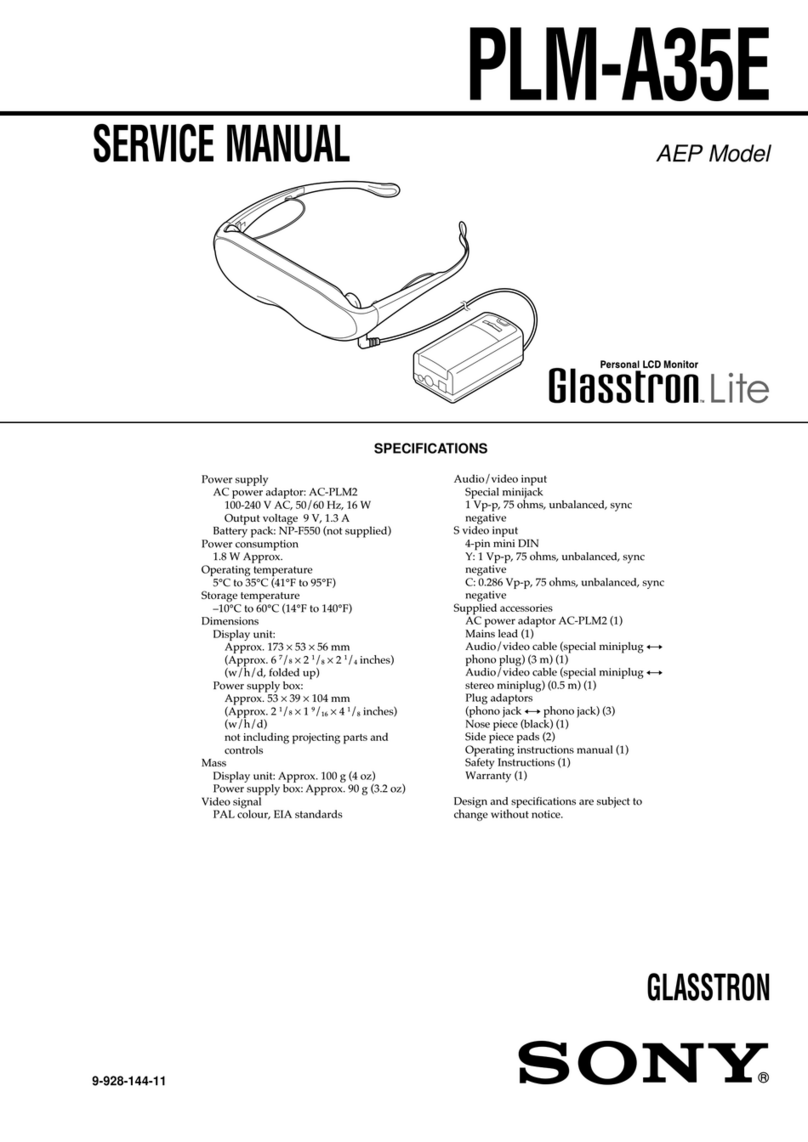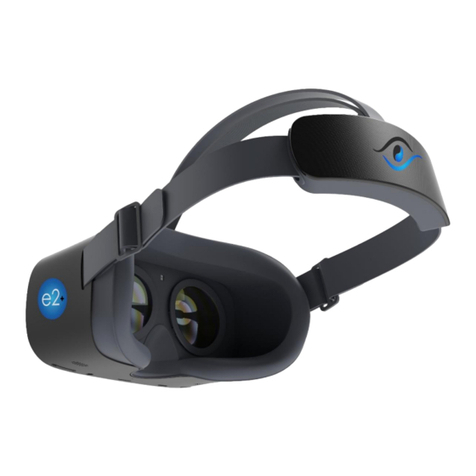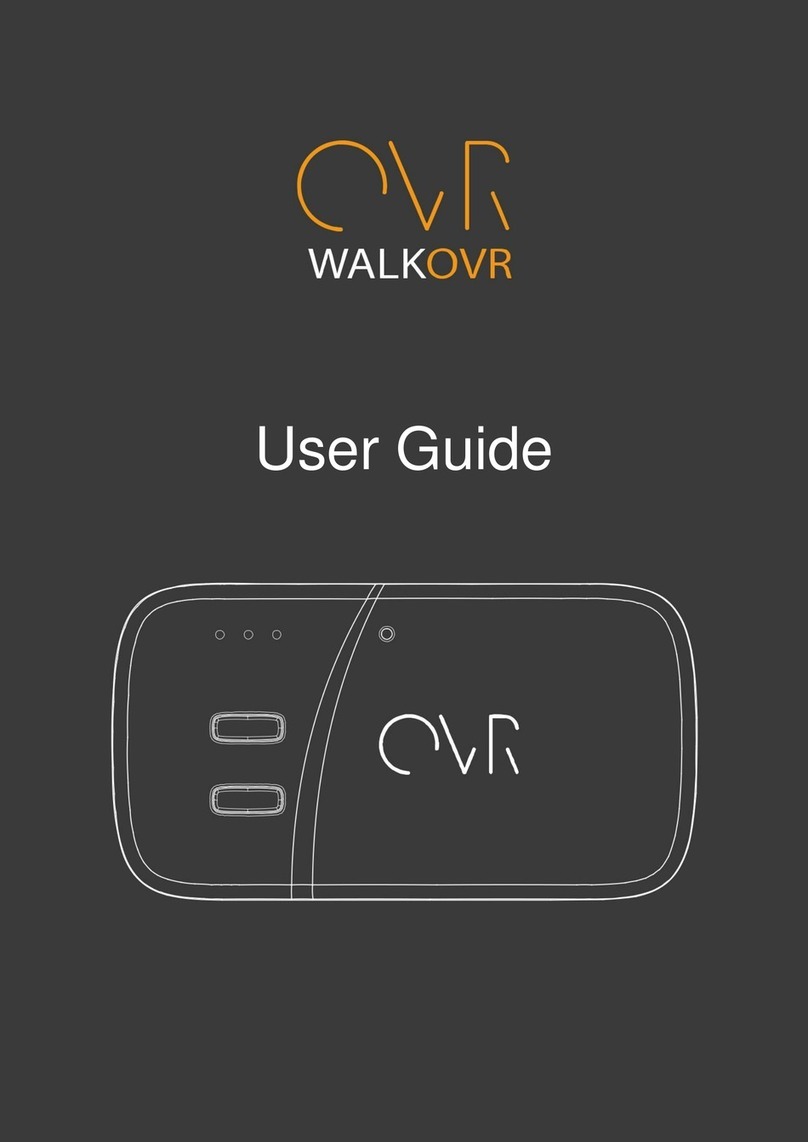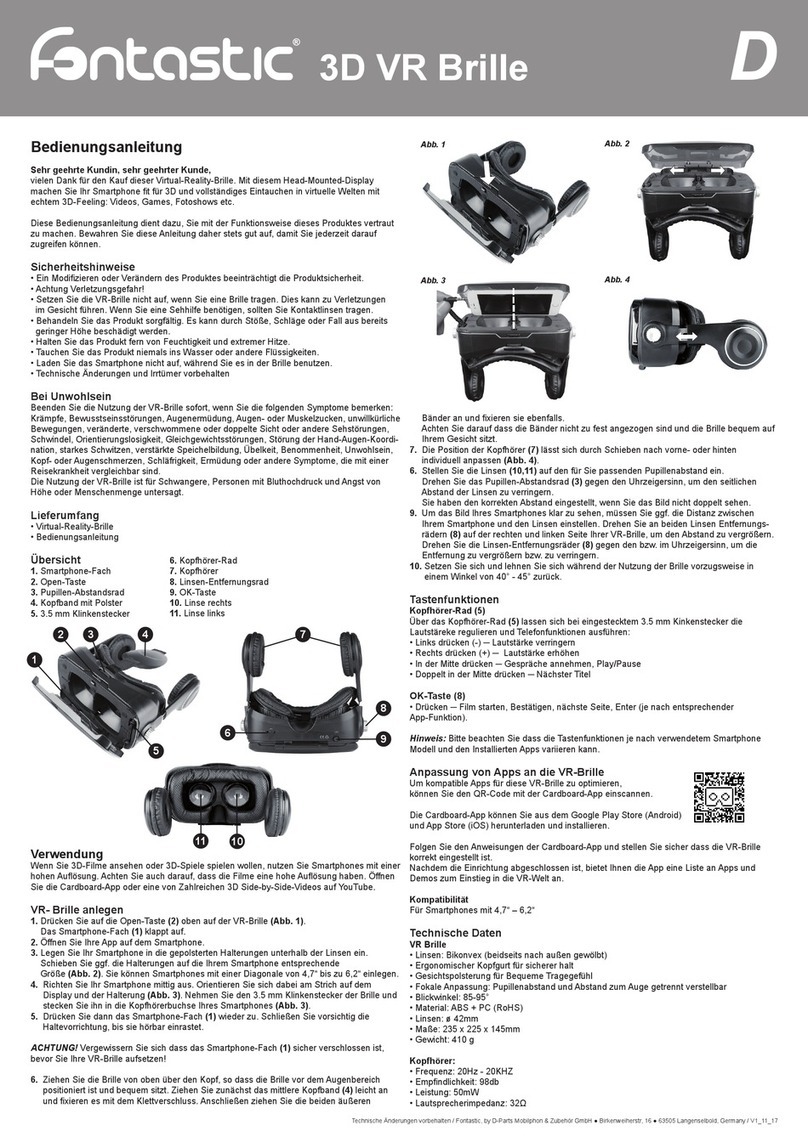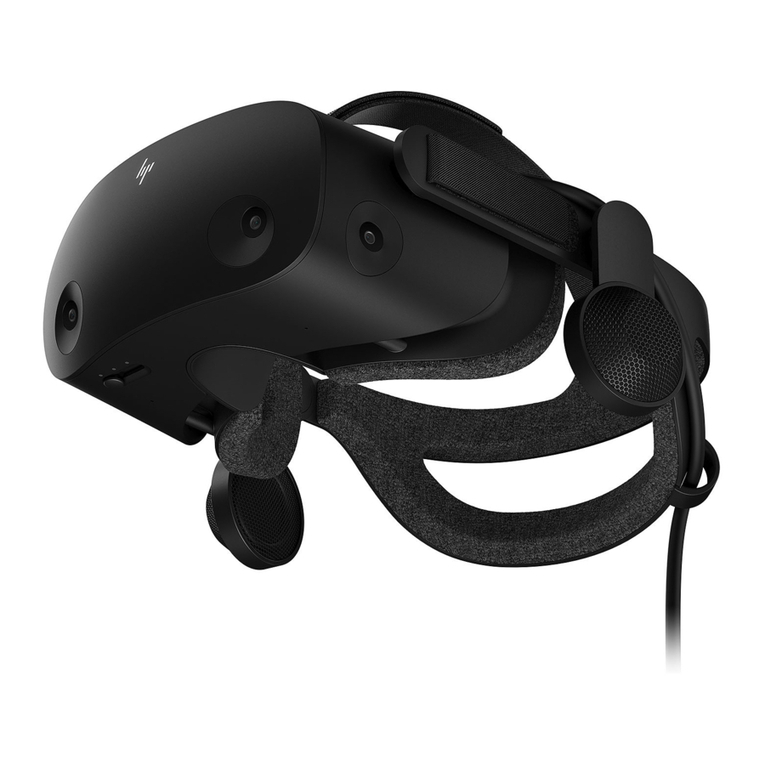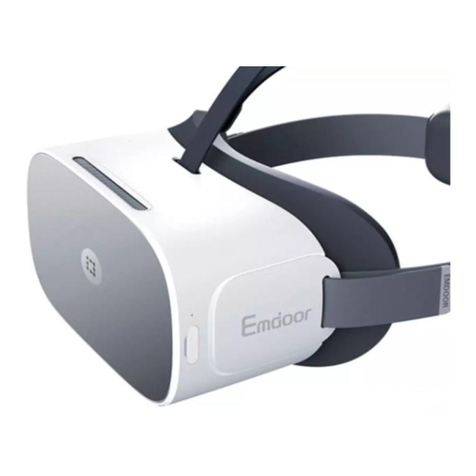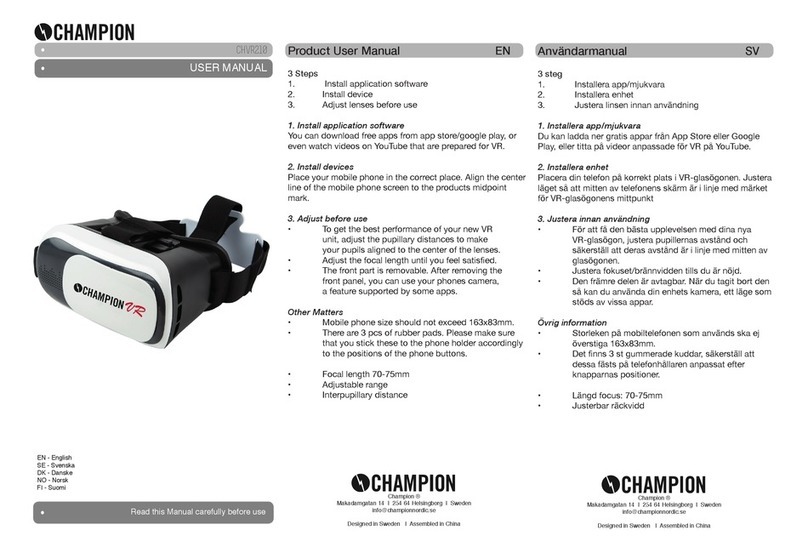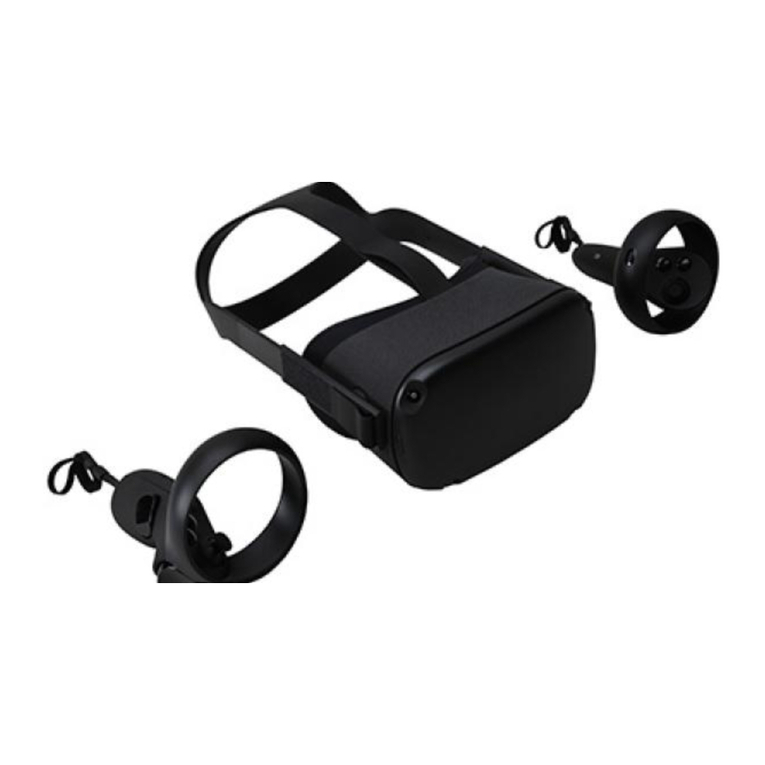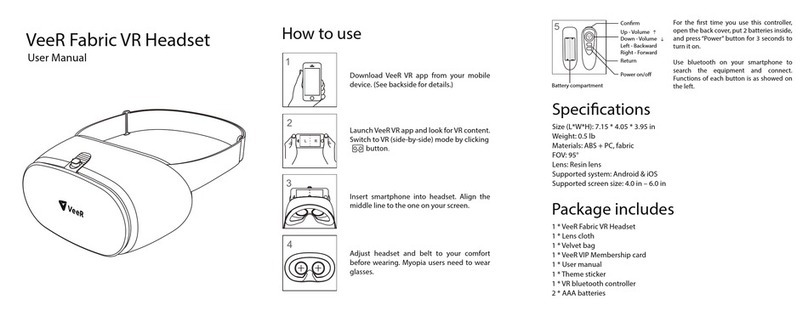
– 2 –
Notes on chip component replacement
• Never reuse a disconnected chip component.
• Notice that the minus side of a tantalum capacitor may be dam-
aged by heat.
Flexible Circuit Board Repairing
• Keep the temperature of the soldering iron around 270 ˚C dur-
ing repairing.
• Do not touch the soldering iron on the same conductor of the
circuit board (within 3 times).
• Be careful not to apply force on the conductor when soldering
or unsoldering.
SAFETY-RELATED COMPONENT WARNING!!
COMPONENTS IDENTIFIED BY MARK !OR DOTTED
LINE WITH MARK !ON THE SCHEMATIC DIAGRAMS
AND IN THE PARTS LIST ARE CRITICAL TO SAFE
OPERATION. REPLACE THESE COMPONENTS WITH
SONY PARTS WHOSE PART NUMBERS APPEAR AS
SHOWN IN THIS MANUAL OR IN SUPPLEMENTS PUB-
LISHED BY SONY.
TABLE OF CONTENTS
1. GENERAL
Glasstron is a brand-new concept in visual display .... 1-1
About the Glasstron ..................................................... 1-1
Checking the supplied accessories .............................. 1-1
Locating the parts and controls ................................... 1-1
Connecting the Glasstron............................................. 1-2
Wearing the Glasstron.................................................. 1-3
Turning on the Glasstron ............................................. 1-4
Setting the password .................................................... 1-5
Using the Glasstron...................................................... 1-5
Viewing the surrounding environment ........................ 1-6
Adjusting the sound and picture .................................. 1-7
Using the optional battery pack................................... 1-8
2. DISASSEMBLY ...................................................... 2-1
3. ELECTRICAL ADJUSTMENTS...................... 3-1
4. DIAGRAMS
4-1. Block Diagram – AUDIO/VIDEO Section – ............. 4-1
4-2. Block Diagram
– A/D, D/A, OSD, SYNC Section – ............................ 4-5
4-3. Block Diagram
– GAMMA CONTROL/LCD DRIVE Section – ........ 4-7
4-4. Block Diagram
– MODE CONTROL/SENSOR/LCS Section – ......... 4-9
4-5. Block Diagram – POWER SUPPLY Section – .......... 4-11
4-6. Notes for Printed Wiring Board and
Schematic Diagram...................................................... 4-14
4-7. Printed Wiring Board – JK-136 Board – .................... 4-15
4-8. Schematic Diagram – JK-136 Board –........................ 4-16
4-9. Schematic Diagram –YC-148 Board (1/3) – .............. 4-17
4-10. Schematic Diagram –YC-148 Board (2/3) – .............. 4-19
4-11. Schematic Diagram –YC-148 Board (3/3) – .............. 4-24
4-12. Printed Wiring Board – YC-148 Board – ................... 4-27
4-13. Printed Wiring Board – MA-324 Board – .................. 4-31
4-14. Schematic Diagram – MA-324 Board (1/7) –............. 4-35
4-15. Schematic Diagram – MA-324 Board (2/7) –............. 4-39
4-16. Schematic Diagram – MA-324 Board (3/7) –............. 4-43
4-17. Schematic Diagram – MA-324 Board (4/7) –............. 4-46
4-18. Schematic Diagram – MA-324 Board (5/7) –............. 4-49
4-19. Schematic Diagram – MA-324 Board (6/7) –............. 4-53
4-20. Schematic Diagram – MA-324 Board (7/7) –............. 4-55
4-21. Printed Wiring Board – LC-61 Board – ..................... 4-57
4-22. Schematic Diagram – LC-61 Board – ......................... 4-59
4-23. Printed Wiring Board – SW-306 Board –................... 4-62
4-24. Schematic Diagram – SW-306 Board – ...................... 4-65
4-25. Printed Wiring Board – DD-107 Board –................... 4-67
4-26. Schematic Diagram – DD-107 Board – ...................... 4-69
4-27. IC Pin Function Description ........................................ 4-88
5. EXPLODED VIEWS............................................. 5-1
6. ELECTRICAL PARTS LIST ............................ 6-1

